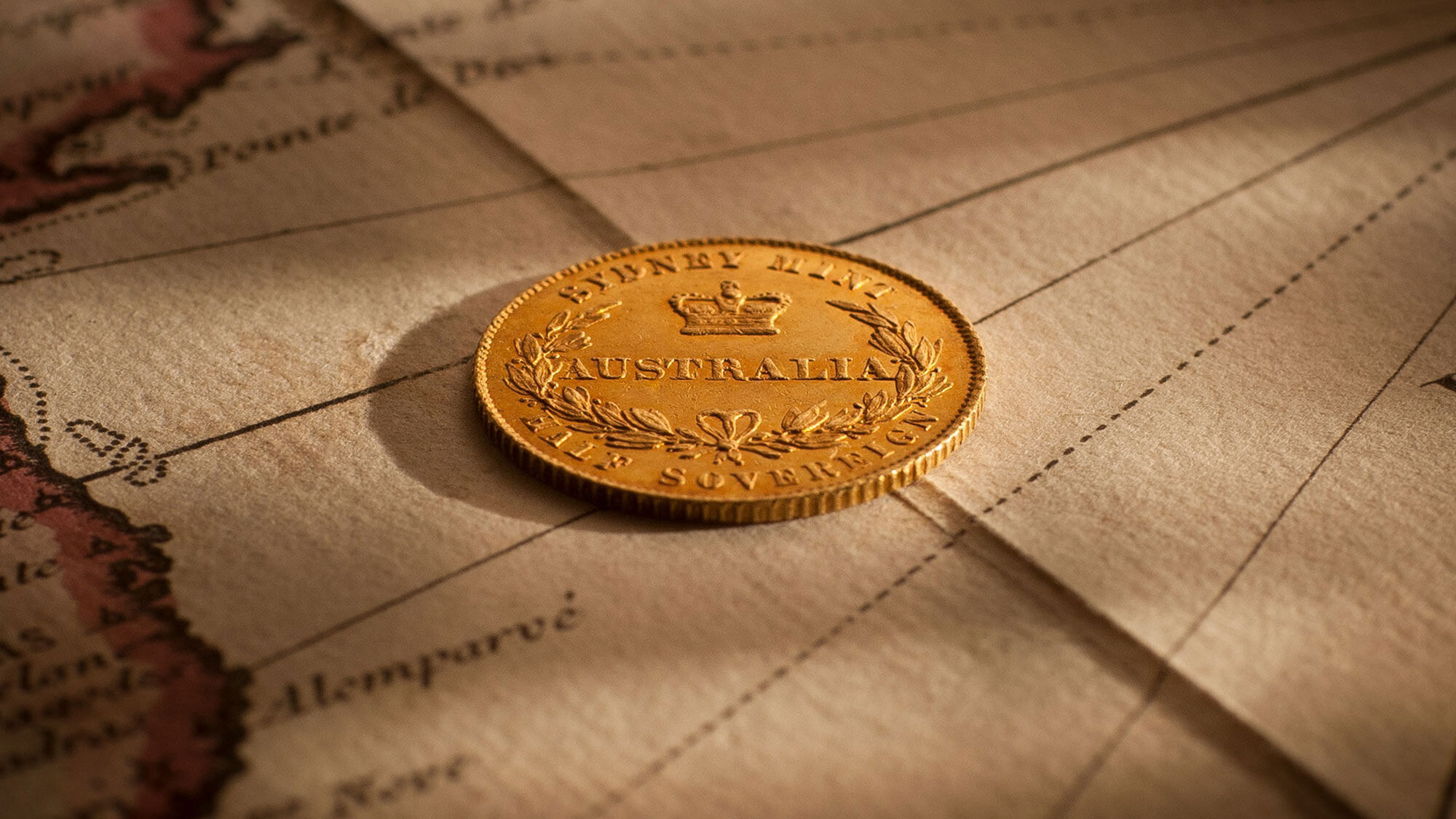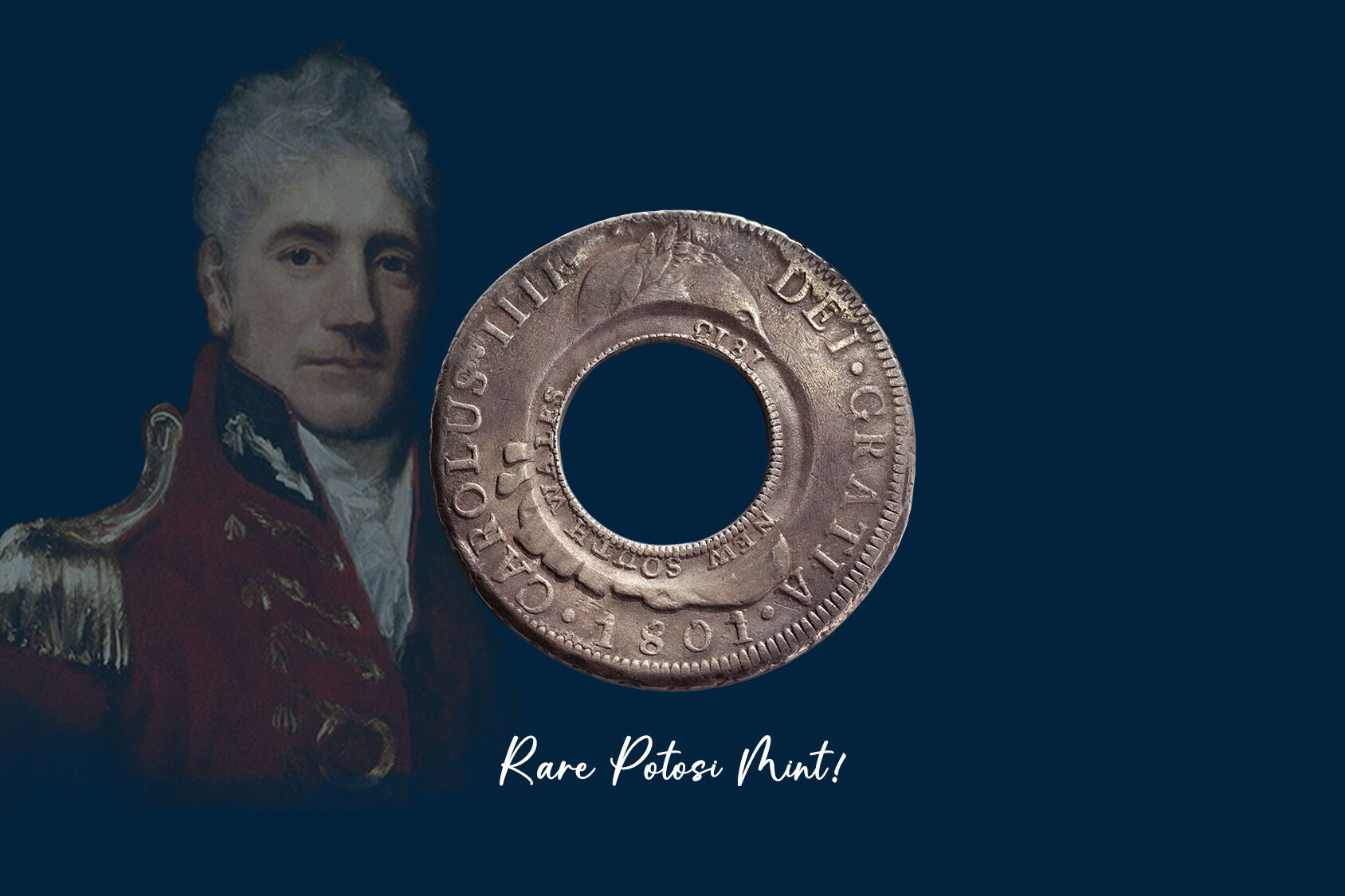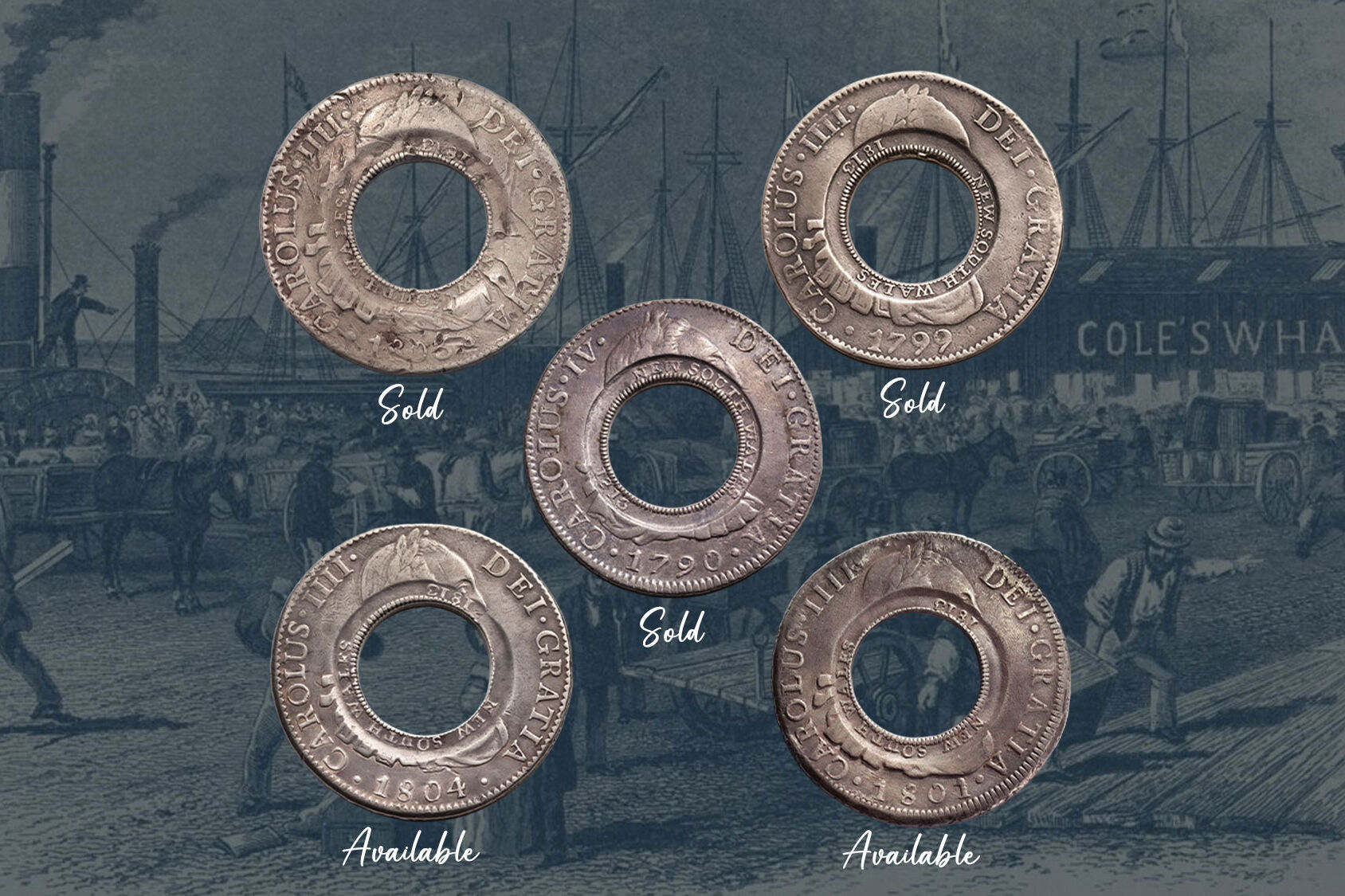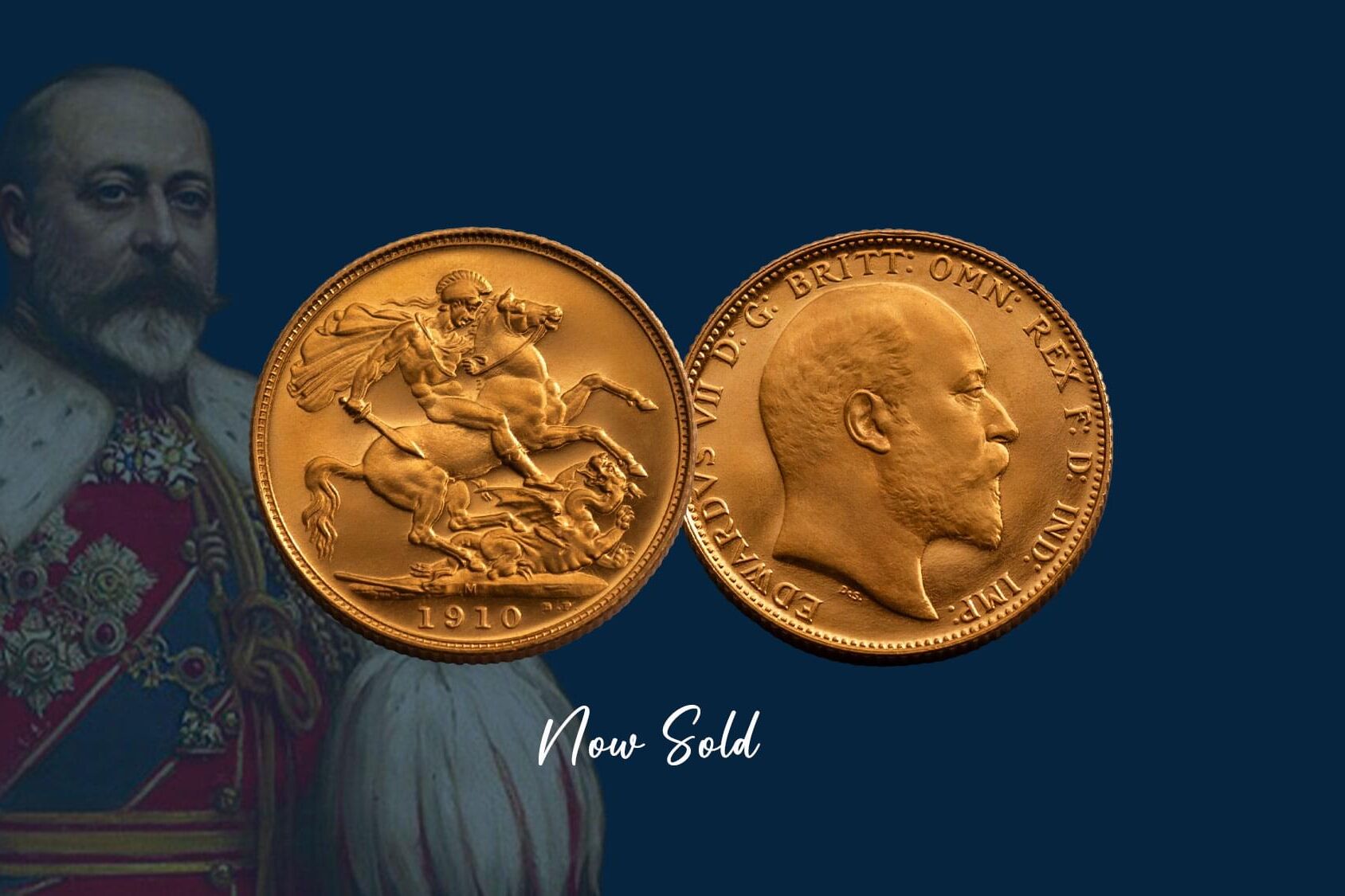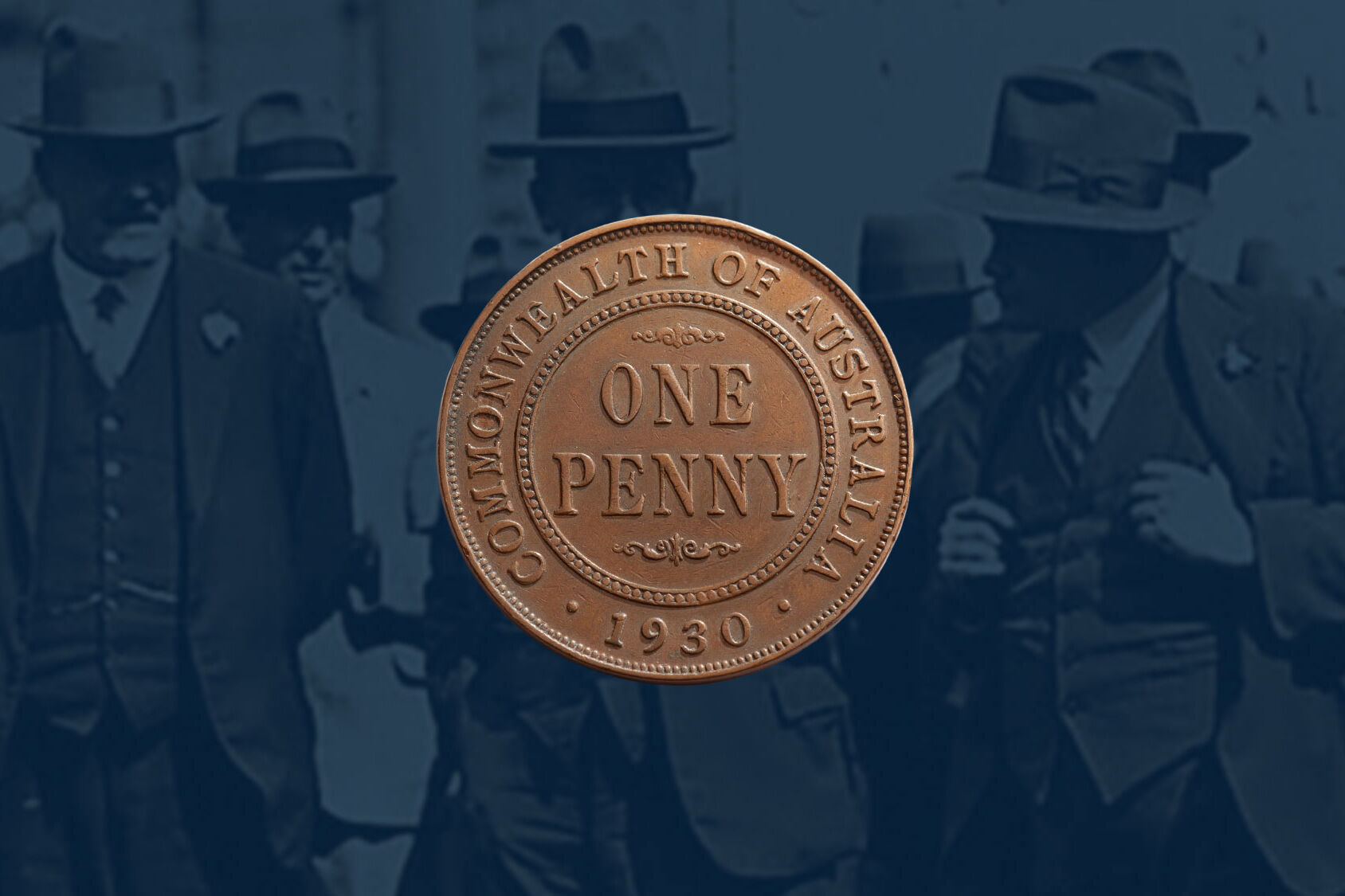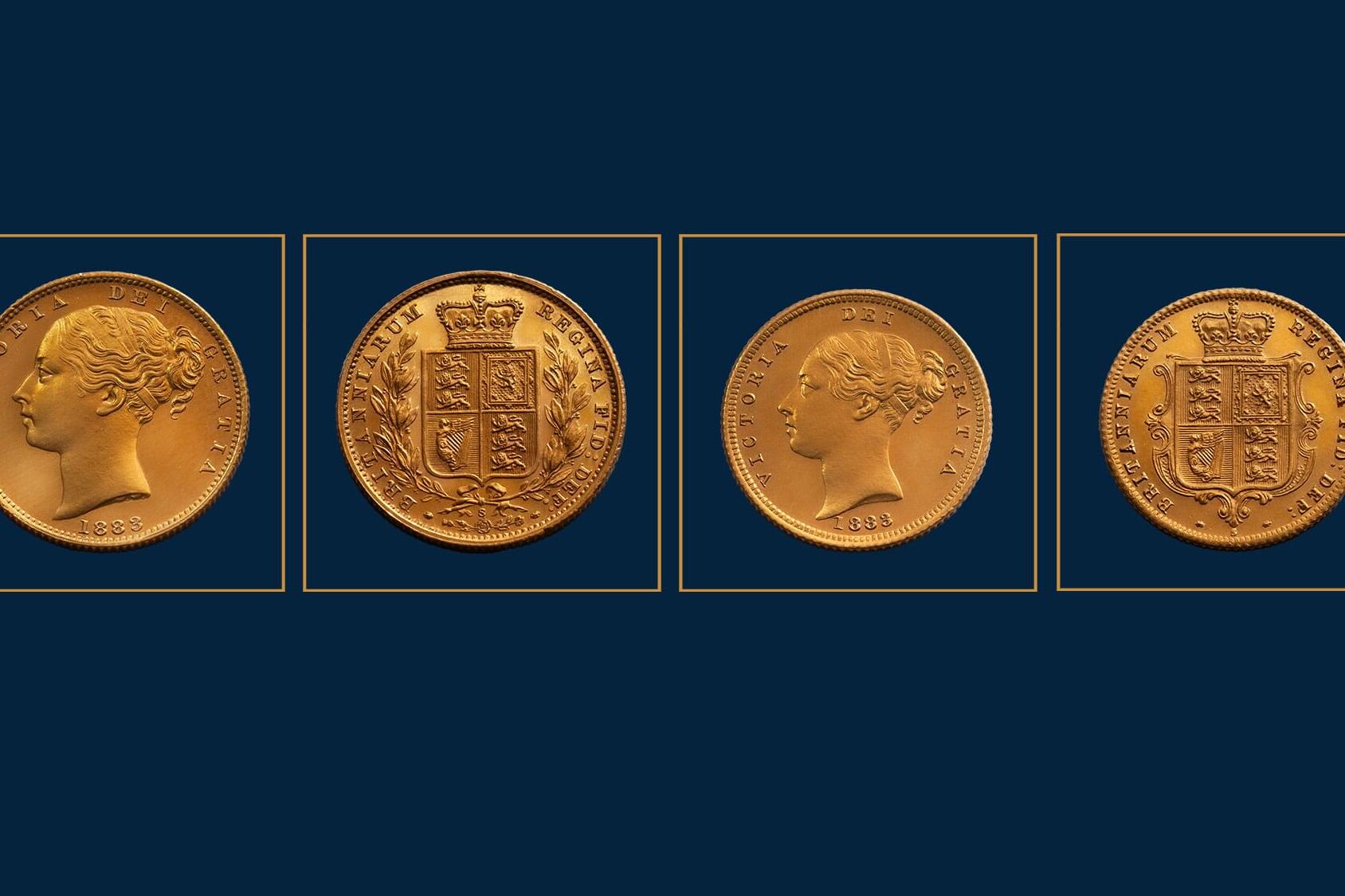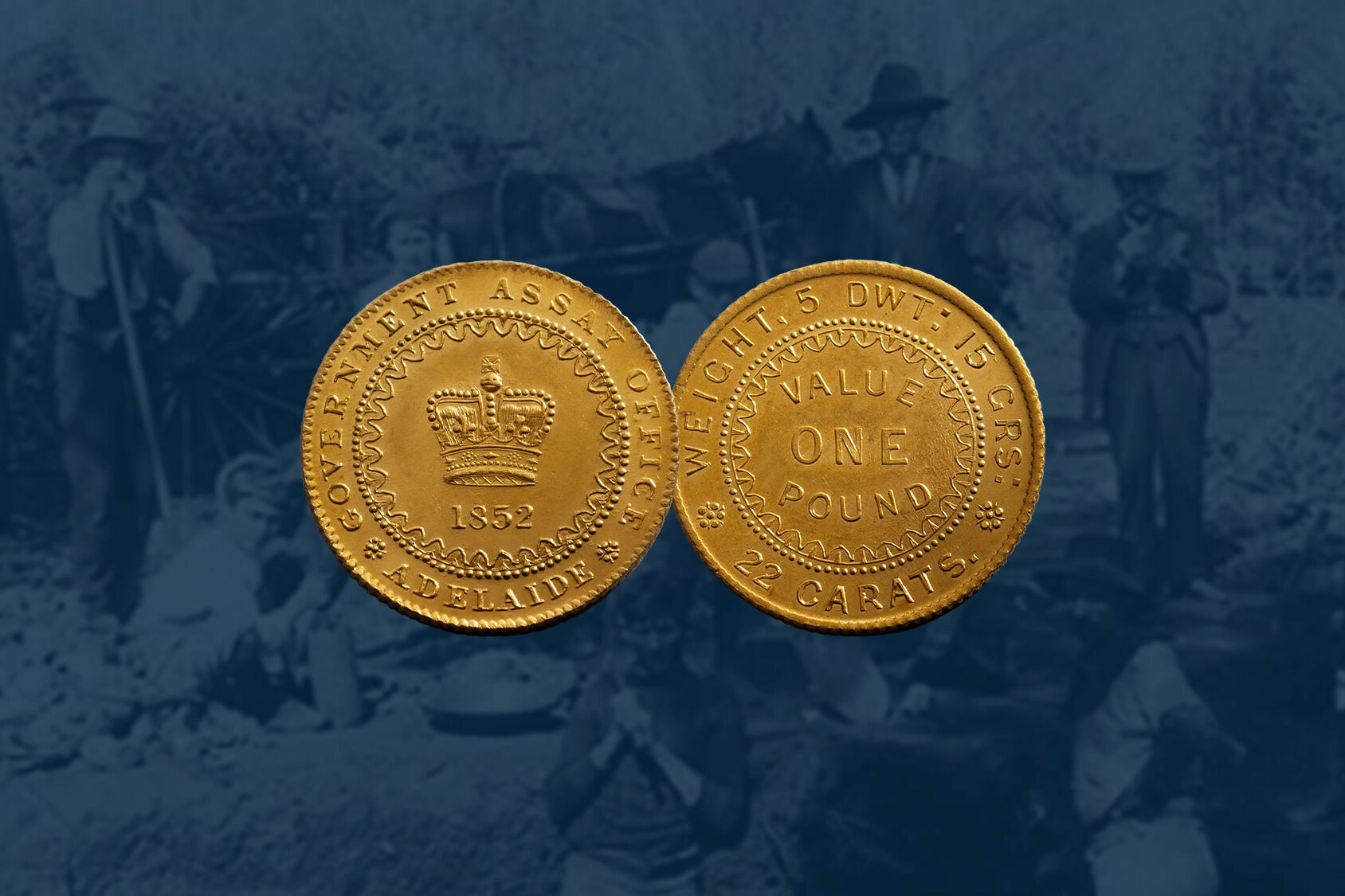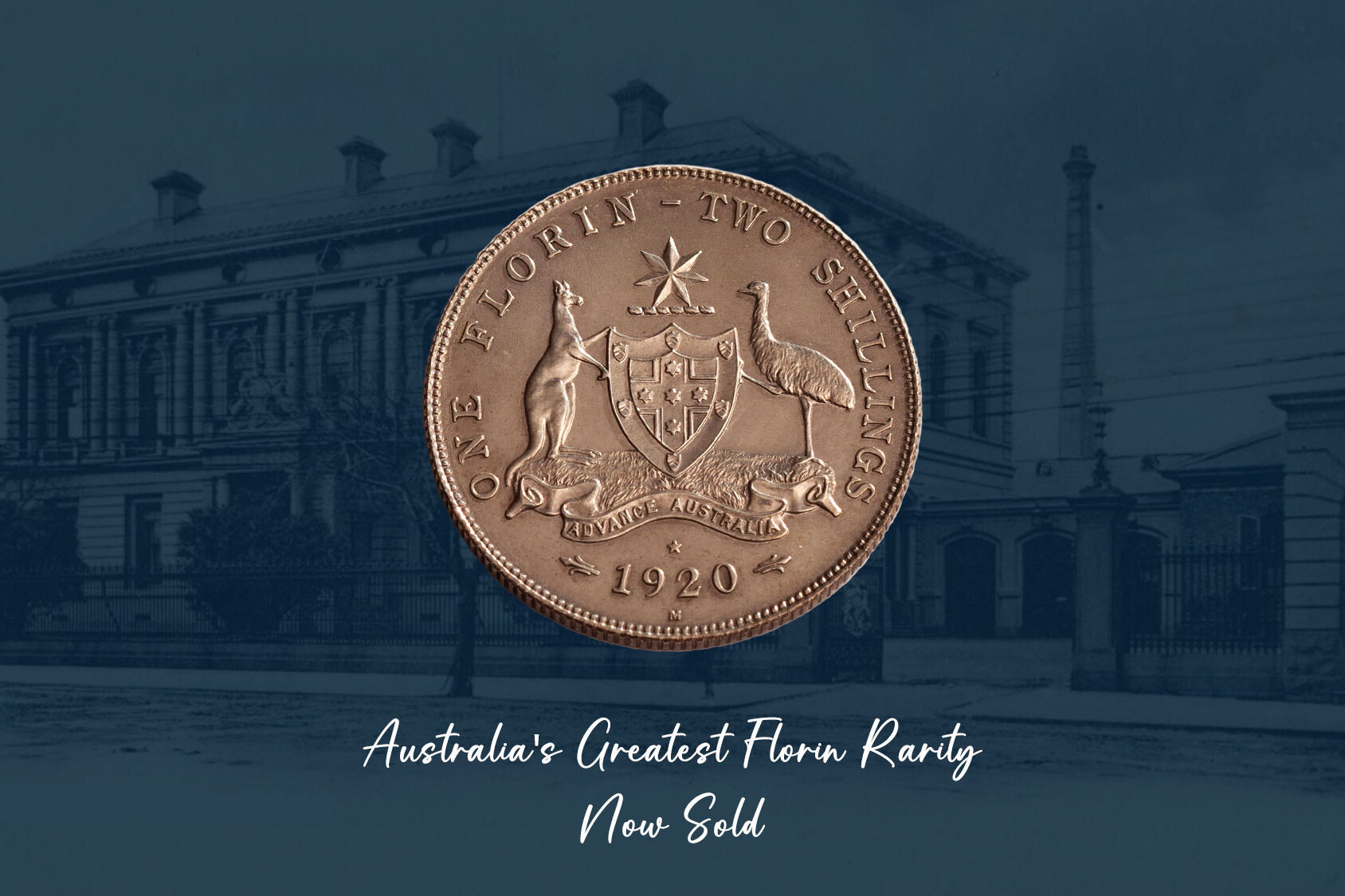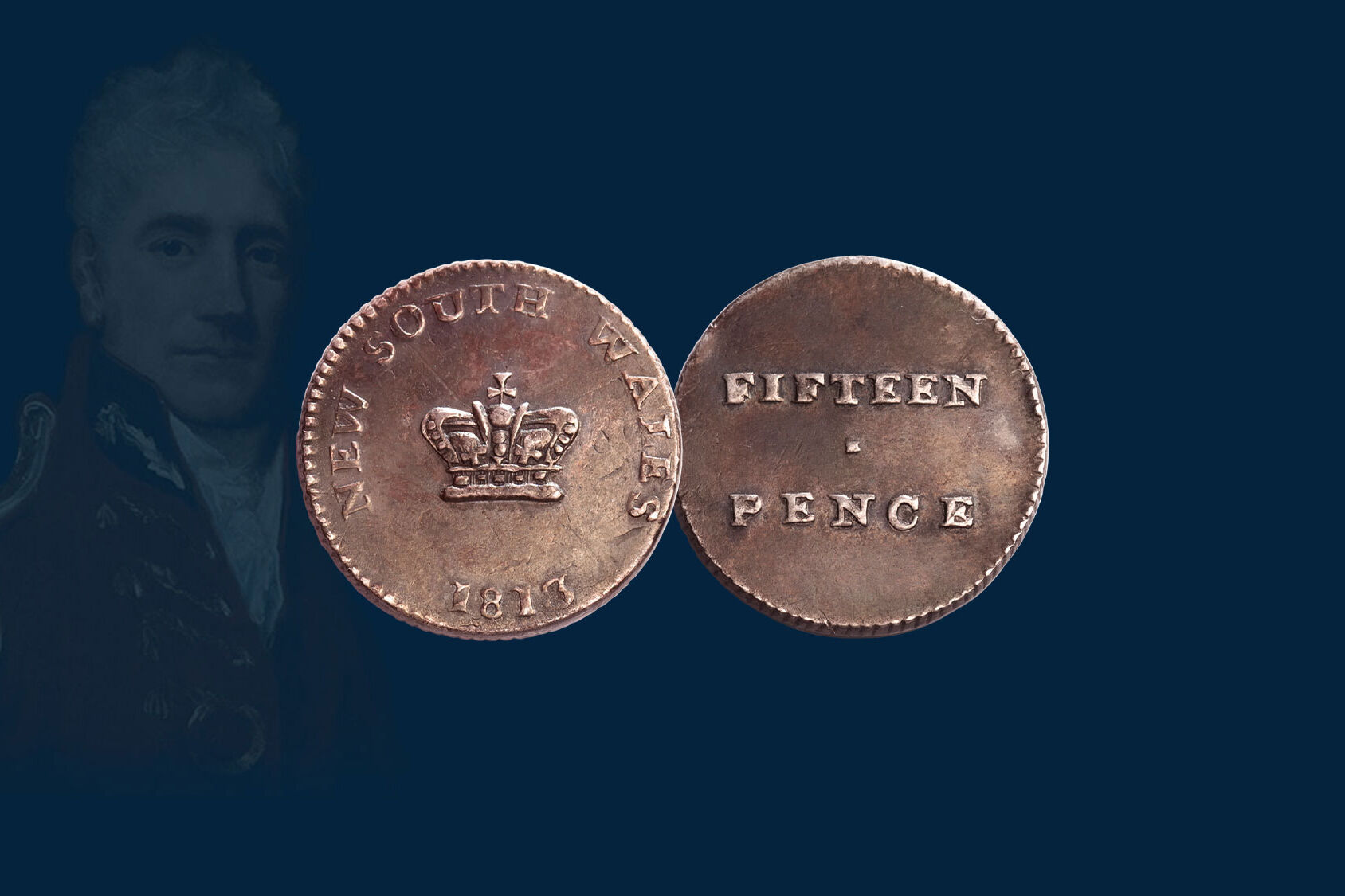The Quartermaster 1855 Sydney Mint Half Sovereign, the jewel in the crown of the Sydney Mint Half Sovereign series
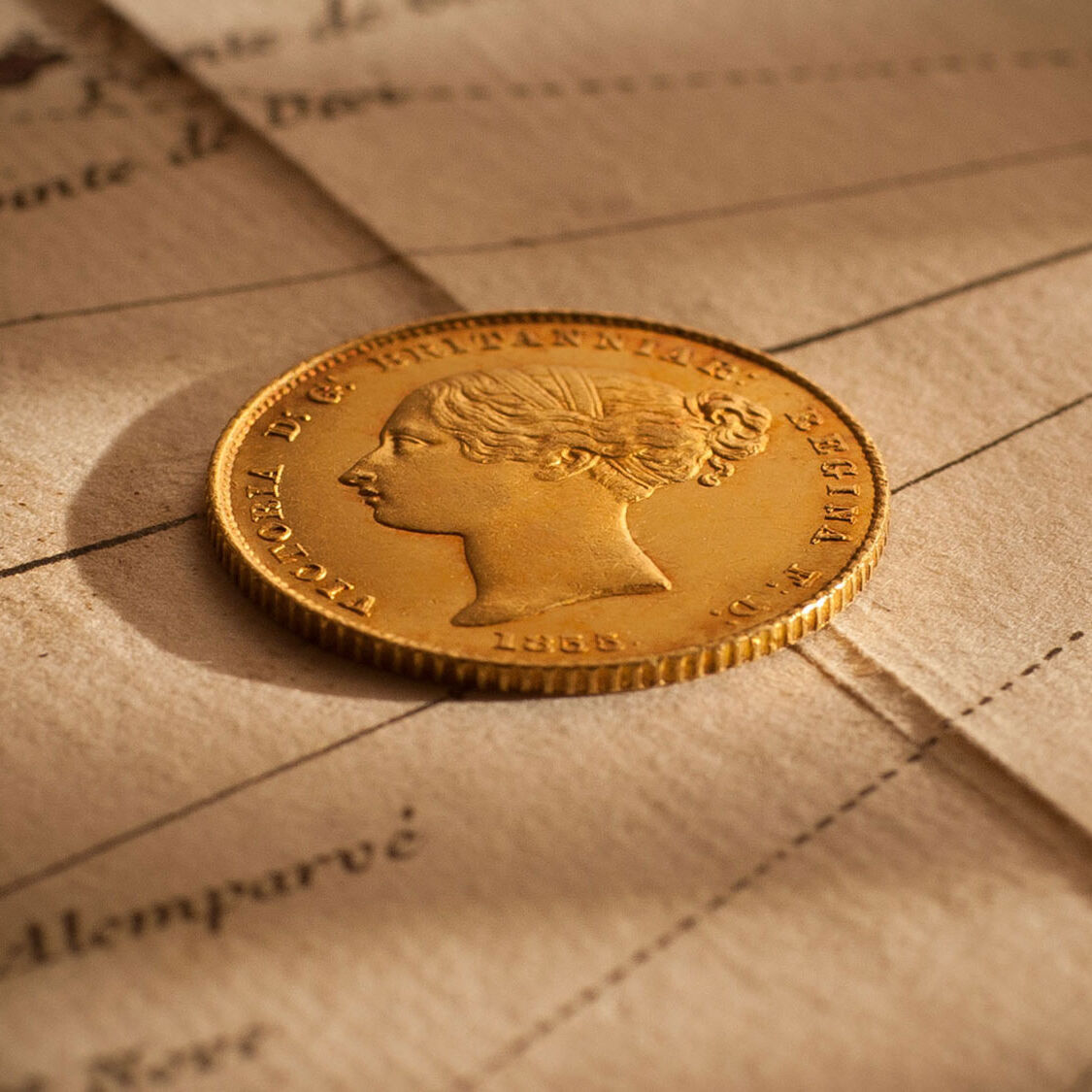

The Quartermaster 1855 Sydney Mint Half Sovereign commands attention and commands respect.
It is an elite coin, with the same numismatic clout as the Nobleman 1852 Adelaide One Pound. The Hastings-Deering Type II 1852 Adelaide One Pound. The Gibbs 1813 Holey Dollar and the J J Ford D/2 1813 Dump. (Shown here)
These five grand colonial rarities are showpiece examples of our founding coins and are the best of the best, standing head and shoulders above all others.
They are unchallenged for quality.
(Top left J J Ford D/2 1813 Dump • Top right Hastings-Deering Type II Adelaide One Pound • Bottom left Nobleman Adelaide One Pound • Bottom right Gibbs 1813 Holey Dollar)
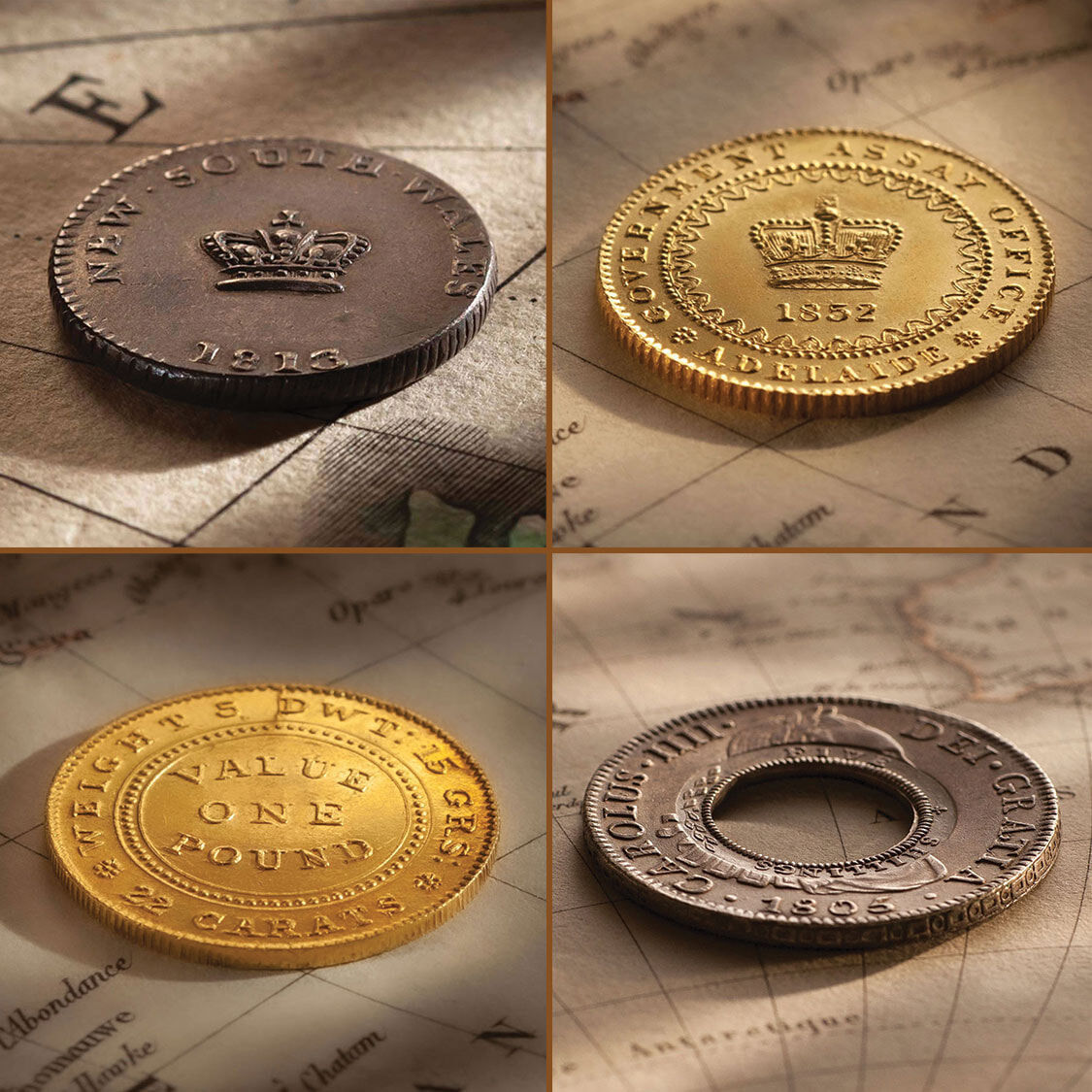
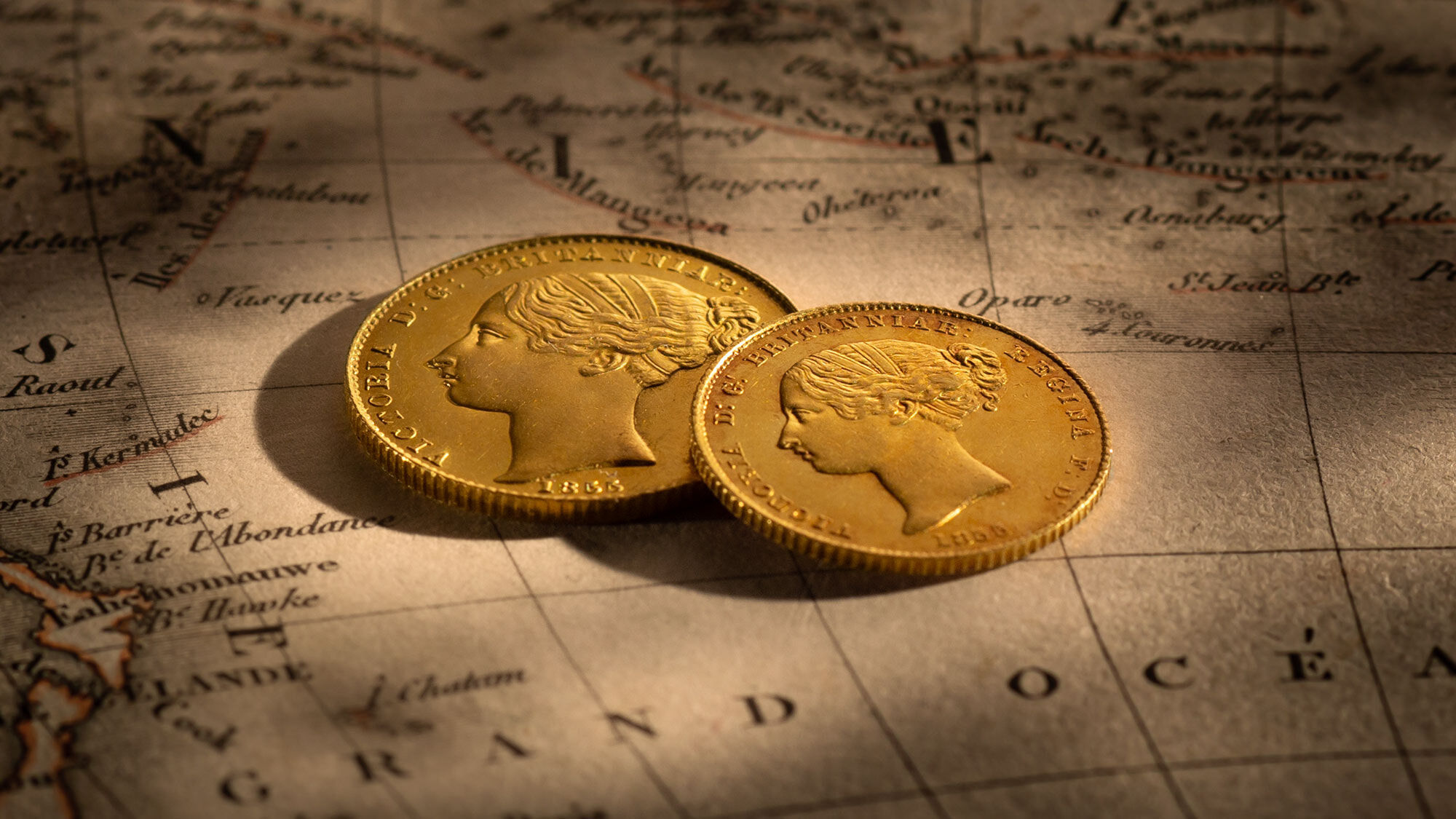
Now, it is a fact that the first year of a new currency is the most sought after by collectors.
And that poses an immediate problem for collectors targeting the 1855 Sydney Mint Half Sovereign. The problem being, there is not many coins to choose from.
The prime reason for its scarcity is that the original mintage was 21,000, making it Australia’s rarest circulating gold coin.
Out of the original mintage, less than forty examples are available to collectors today. So, irrespective of a quality preference, finding just one coin available for sale is challenging.
And it is even more challenging to find an 1855 Sydney Mint Half Sovereign in top condition, one that is problem free and visually appealing.
As the Half Sovereign was a low denomination coin, and circulated widely in the colony, most examples are found today well-worn and virtually denuded of detail. Many are damaged with scratches, spade or metal detector marks. A number are noted as having been holed to wear on a necklace. Some have also been mounted as a jewellery item.
It is a fact that most of the 1855 Sydney Mint Half Sovereigns that have come onto the market over the last century have been defined by their shortcomings, their extensive wear and the resultant obliteration of the design. Or they have been defined by their defects. The gouges that have occurred in the fields when the coin has hit the metal detector. Or been dug up by a spade.
In our view there are three high quality 1855 Sydney Mint Half Sovereigns available to collectors and they are:
• The Quartermaster 1855 Sydney Mint Half Sovereign, quality About Uncirculated and the finest example by far. (This coin.)
• The Barrie Winsor 1855 Sydney Mint Half Sovereign, second finest known, quality of Extremely Fine.
• The Roy Brook 1855 Sydney Mint Half Sovereign, third finest known, quality of Good Very Fine.
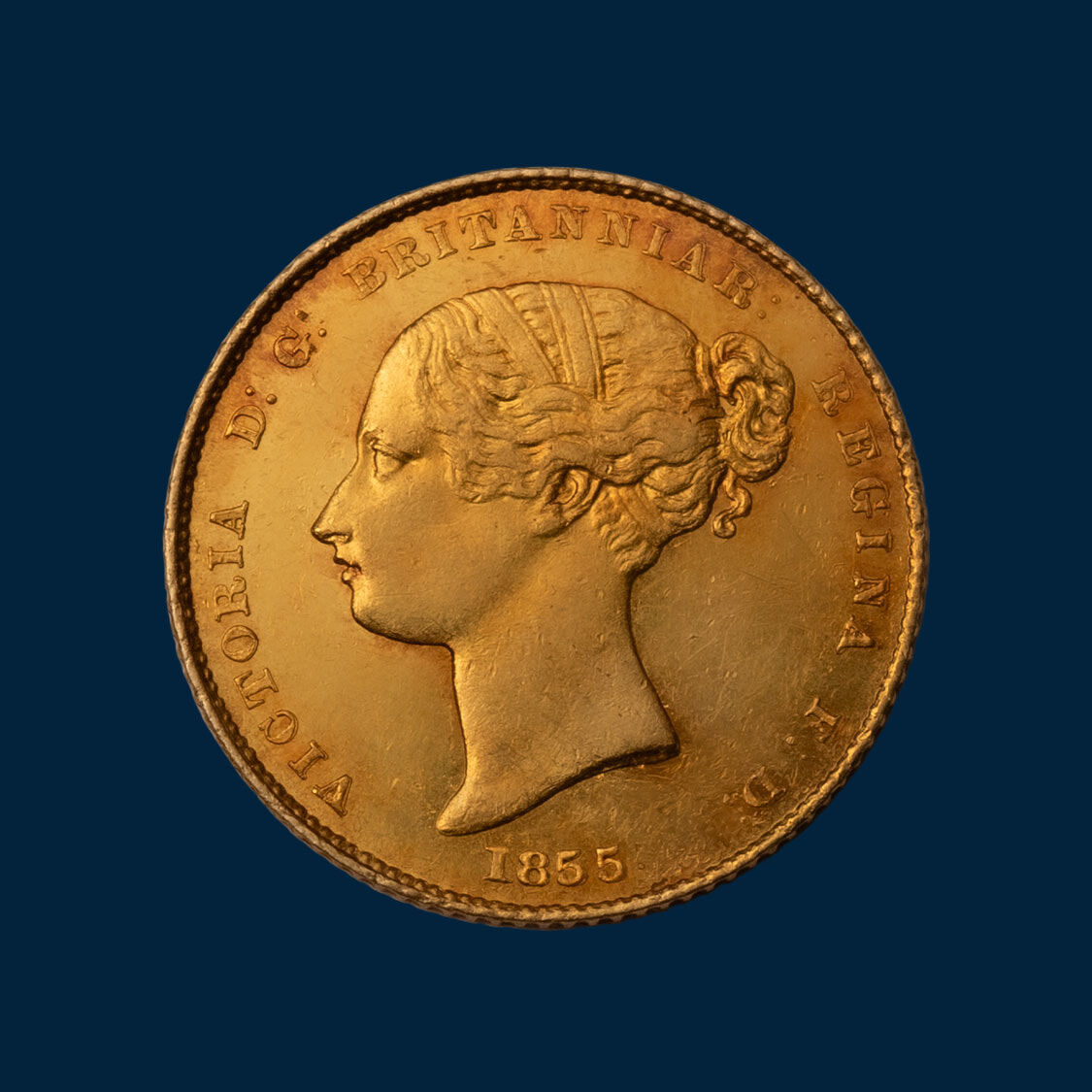
Visually this 1885 Sydney Mint Half Sovereign is powerful. The reverse fields are mirror-like with beautiful old-gold tone through the design detail. Note the strength in the hairline across the forehead and the detail in the hair. Also note the edges.
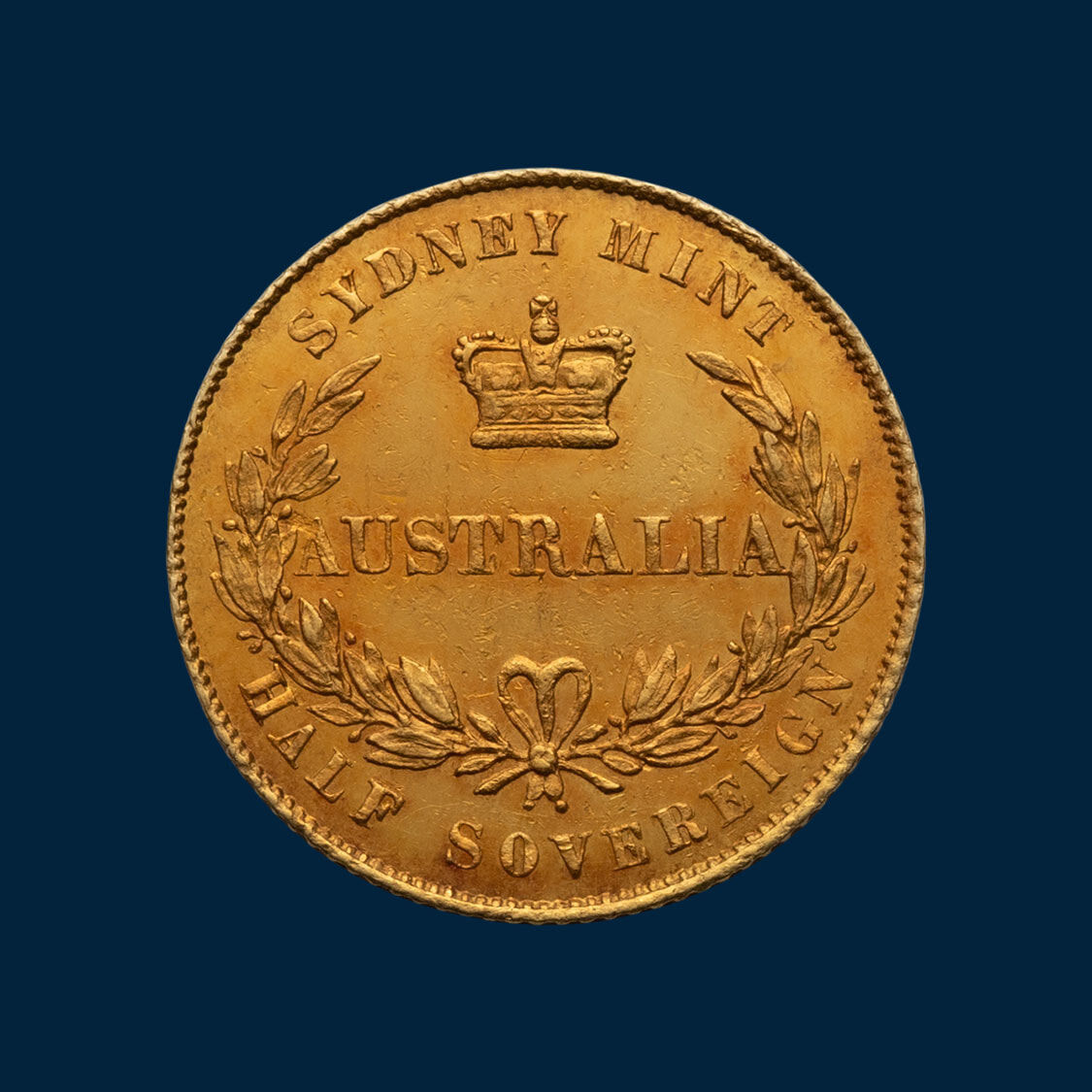
An amazing 1855 Sydney Mint Half Sovereign, the fleur de lis in the crown. left and right, well shaped and the pleats in the cloth detailed. The cross on the orb is complete. The obverse fields also are highly reflective, the old-gold tone through the legend. The edges are strong and undamaged, framing the coin.
In 1851, the Sydney Morning Herald published an editorial championing the establishment of a branch of the Royal Mint in Sydney to buy gold at full price and strike it into sovereigns.
The plan for a branch of the Royal Mint received great support from the diggers. Solid opposition came from the banks and a prominent group of private individuals both of whom had become major buyers of gold on the fields at prices discounted well below the full London price. Profits were at stake! Both factions had earlier joined forces to quash a proposal for a Sydney Assay Office that would have also impacted negatively on their commercial interests.
While it is true that New South Wales had in 1851 formally petitioned the home office in London for a branch of the Royal Mint, the decision had already been made in the British Parliament to give the colonies greater autonomy and establish a branch mint to allow them to strike coins of the realm, the sovereign.
The Sydney Mint would strike sovereigns and half sovereigns to exactly the weight and fineness levels at the Royal Mint but they would have their own design. This was to protect the international reputation of the imperial gold coins in the event that Sydney was unable to meet the exacting standards demanded of the coin.
On the 19 August 1853 Queen Victoria gave formal approval to establish Australia’s very first mint at or near Sydney in New South Wales. In the same year, the Royal Mint London prepared designs of Australia’s first gold coinage and manufactured the dies.
The sovereign and half sovereign obverse design was a filleted bust of Victoria, only slightly different to that used on British sovereigns. The obverse quickly fell out of favour and James Wyon was ordered to engrave a new obverse that would be uniquely Australian to easily distinguish the colonial sovereigns from their British counterparts. To this end, a new portrait was introduced in 1857 that featured Queen Victoria with a banksia wreath in her hair instead of the band.
The reverse design was based loosely around contemporary reverse designs of the British sixpence and shilling. Its strong point of difference to the British sovereigns was the inclusion of the words 'Australia' and 'Sydney Mint'.
The use of the word Australia, a fascination with historians. At the time the nation was operating as separate colonies. Australia did not operate under a single Government until Federation in 1901.
The first Deputy Master of the Sydney Mint was Captain Edward Wolstenholme Ward, a trained member of the Royal Engineers. (Photo shown at top.)
Ward arrived in the colony in October 1854 on the ship Calcutta, along with other members of the Royal Engineers, a sergeant, three corporals and twelve privates. The group was deposited on Circular Quay with the bales and boxes of Sydney's new mint, along with the dies.
The Sydney Mint was established in a wing of the 'Rum Hospital' in Macquarie Street, Sydney. The mint began receiving gold on 14 May 1855 and issued its first gold sovereign soon after on June 23.
In their infancy the Sydney Mint sovereigns and half sovereigns were legal tender only in the colony of New South Wales.
In January 1856, the British tested the quality of the colonial gold coins and the results showed that they had a higher intrinsic value than their British counterparts, primarily due to their 8.33% silver content. Once these facts became known, profiteers began melting them down.
The colonial gold coins also became legal tender in Tasmania and Western Australia in 1856. South Australia and Victoria were reticent to enshrine the Sydney Mint as Australia's official mint as each colony had independently requested their own and were miffed at missing out.
By 1857, the legal tender scope was widened to include all Australian colonies and Mauritius, Ceylon and Hong Kong. In 1868 the Sydney Mint Sovereigns and Half Sovereigns became legal tender throughout the British Empire.
The design of the Sydney Mint Half Sovereign lasted until 1866 and was the only time the word Australia appeared on our gold sovereigns. From 1871, Australia's half sovereigns took on a traditional British design.
Coinworks recommends
© Copyright: Coinworks
